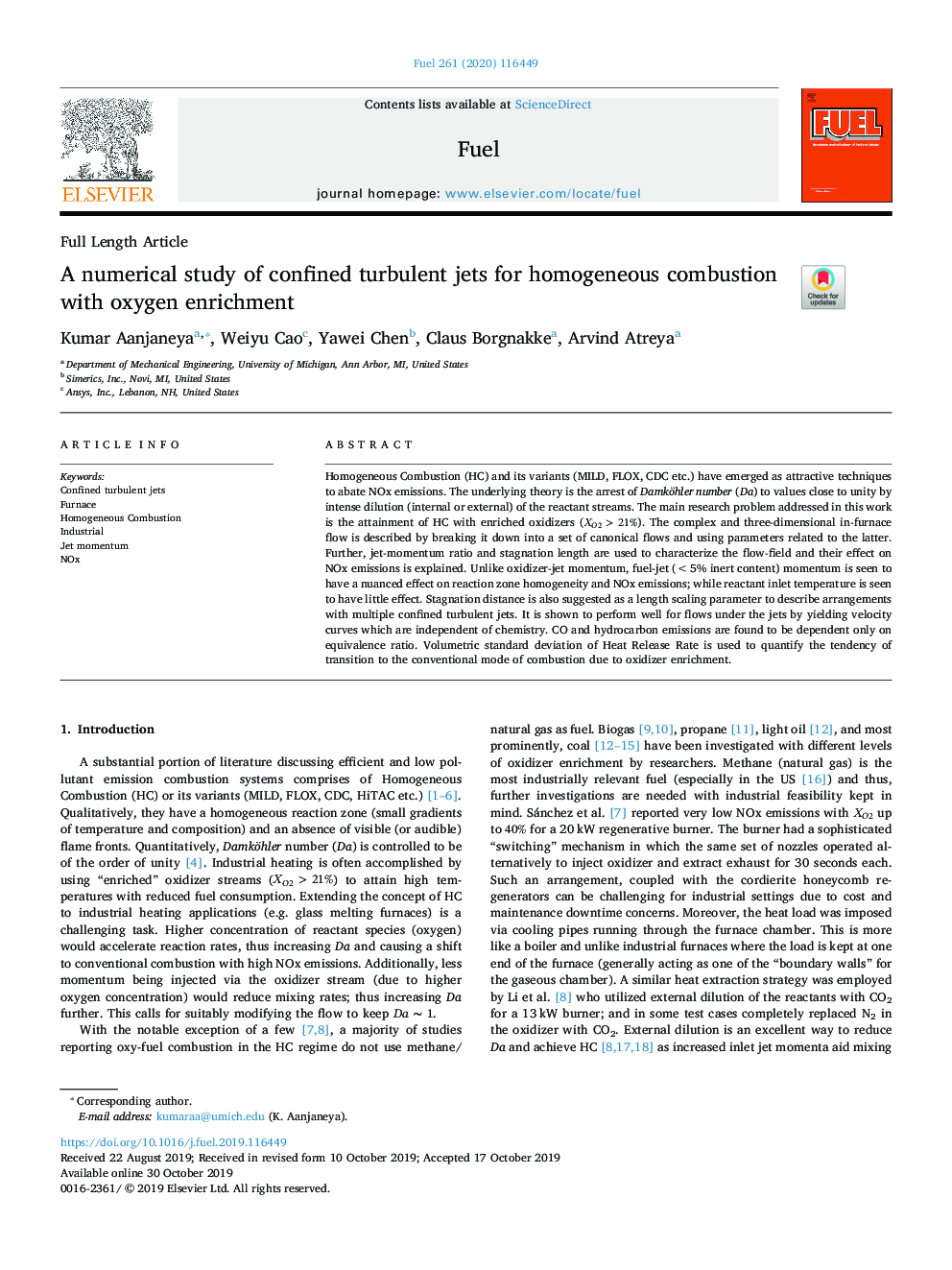| Article ID | Journal | Published Year | Pages | File Type |
|---|---|---|---|---|
| 13415921 | Fuel | 2020 | 10 Pages |
Abstract
Homogeneous Combustion (HC) and its variants (MILD, FLOX, CDC etc.) have emerged as attractive techniques to abate NOx emissions. The underlying theory is the arrest of Damköhler number (Da) to values close to unity by intense dilution (internal or external) of the reactant streams. The main research problem addressed in this work is the attainment of HC with enriched oxidizers (XO2>21%). The complex and three-dimensional in-furnace flow is described by breaking it down into a set of canonical flows and using parameters related to the latter. Further, jet-momentum ratio and stagnation length are used to characterize the flow-field and their effect on NOx emissions is explained. Unlike oxidizer-jet momentum, fuel-jet (<5% inert content) momentum is seen to have a nuanced effect on reaction zone homogeneity and NOx emissions; while reactant inlet temperature is seen to have little effect. Stagnation distance is also suggested as a length scaling parameter to describe arrangements with multiple confined turbulent jets. It is shown to perform well for flows under the jets by yielding velocity curves which are independent of chemistry. CO and hydrocarbon emissions are found to be dependent only on equivalence ratio. Volumetric standard deviation of Heat Release Rate is used to quantify the tendency of transition to the conventional mode of combustion due to oxidizer enrichment.
Related Topics
Physical Sciences and Engineering
Chemical Engineering
Chemical Engineering (General)
Authors
Kumar Aanjaneya, Weiyu Cao, Yawei Chen, Claus Borgnakke, Arvind Atreya,
